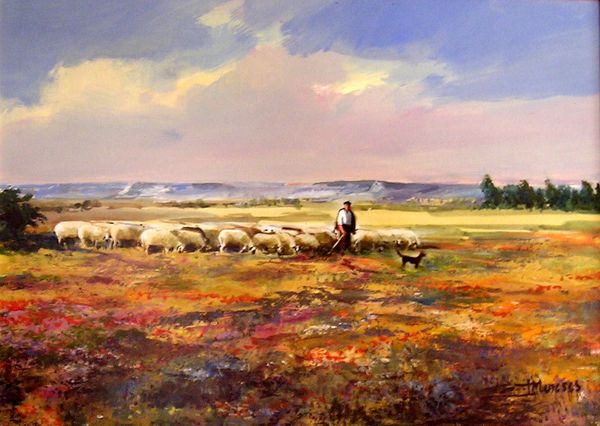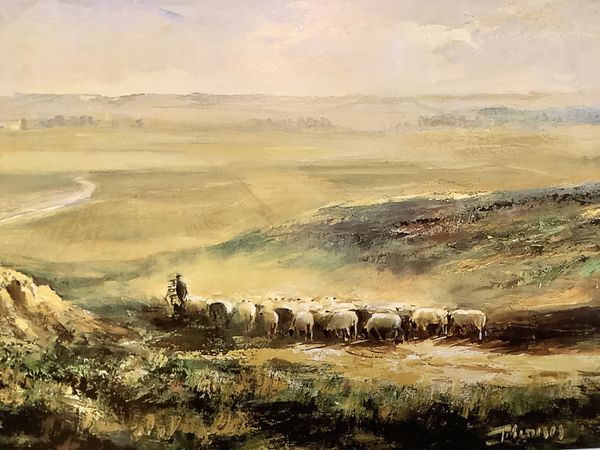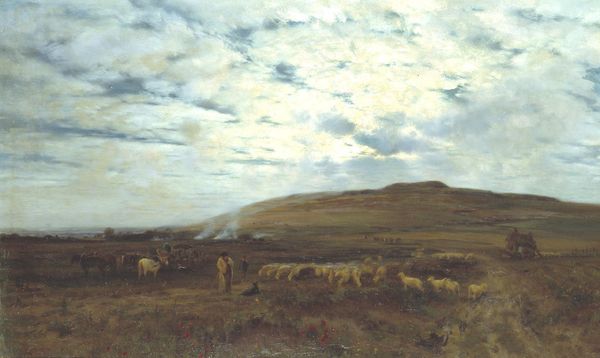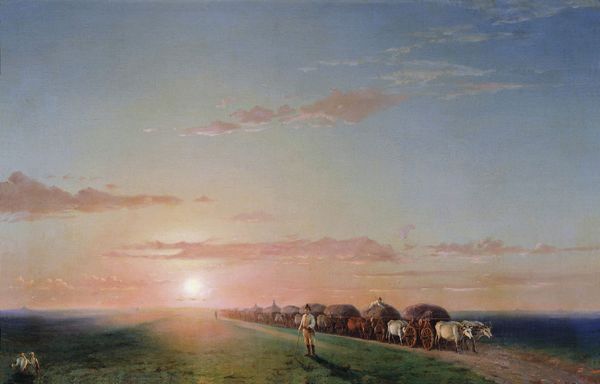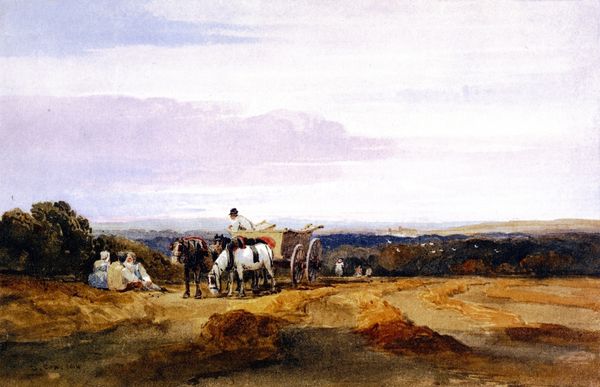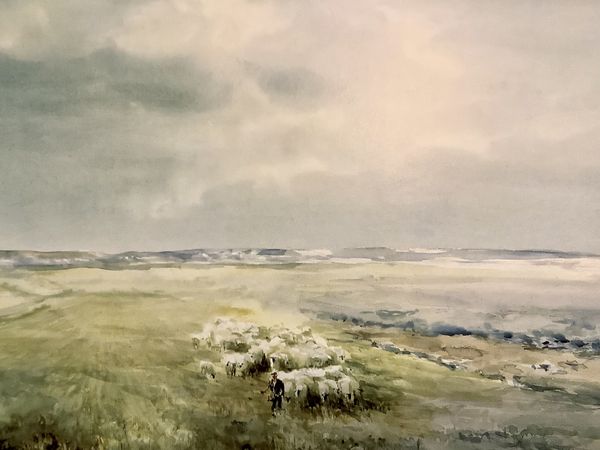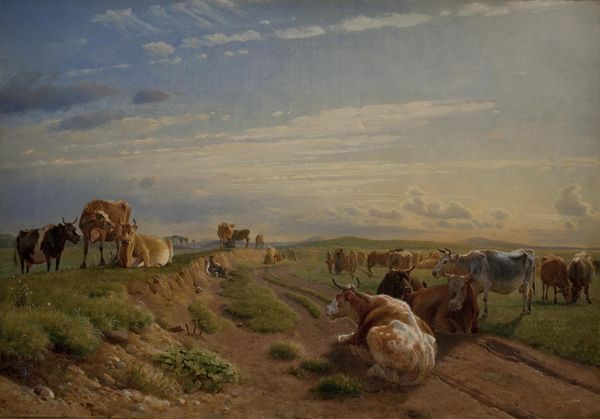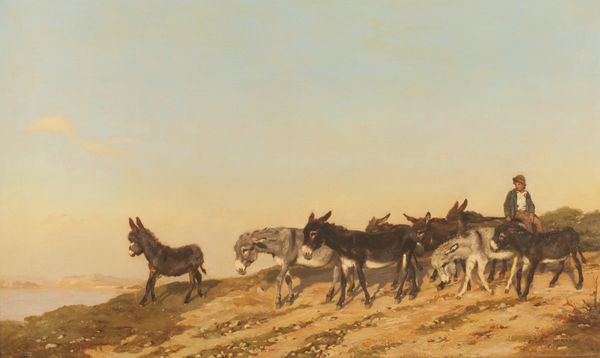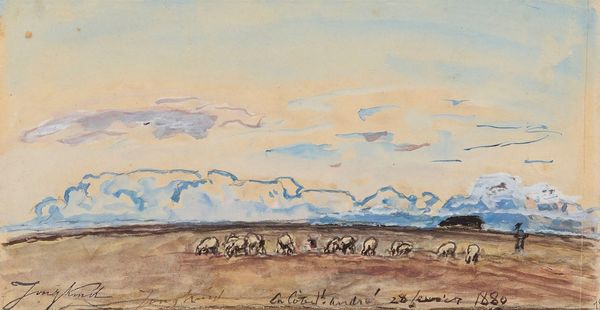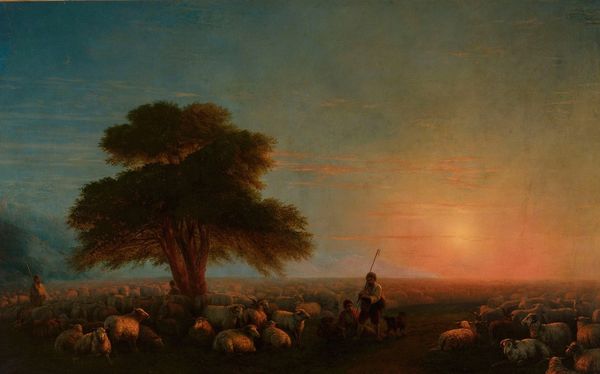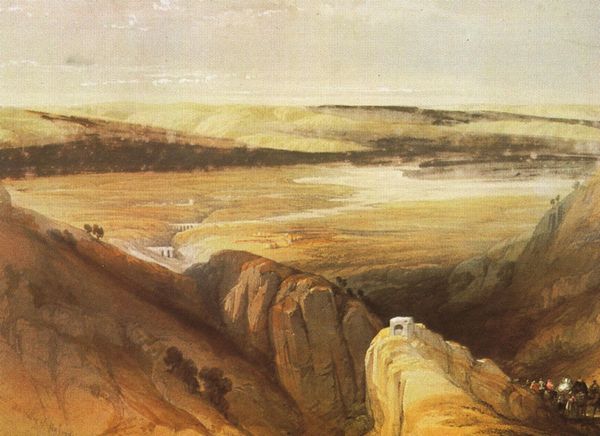
Copyright: Public domain
Editor: Here we have Aivazovsky's "Ox Train on the Sea Shore," painted in 1860. The vast expanse of the sky and land really makes the ox train seem small and vulnerable. How do you interpret this work? Curator: Aivazovsky often depicted the sea, but here the focus shifts to the land and the labor upon it. The ox train becomes a symbol of human interaction with the environment and with systems of labor, but do you see how this could be critiqued through the lens of post-colonial studies? Editor: I hadn't thought about that. Is it about how resources are extracted? Curator: Exactly. Notice the horizon and how the soft, romantic light almost hides the hard realities of agricultural work and its intersection with social class in 19th-century Russia. Aivazovsky, despite his talent, participates in constructing an idyllic, potentially misleading picture. What feeling do you get from the repetition of forms of the train against the natural background of the seaside? Editor: A sort of… monotony? And I guess that romantic glow minimizes the animals' perspective, their role, the hard work imposed on them... I didn't think about that before. Curator: The artist creates this almost dreamlike image where labor appears beautiful. Consider how gender, class, and the exploitation of natural resources, including animals, are all but invisible, framed in a romantic glow. Does it alter how you view the piece? Editor: Definitely. I'll look more carefully in the future, considering the historical implications in these picturesque landscapes. Curator: Precisely. Examining artworks from different intersectional standpoints truly broadens their significance, don't you think?
Comments
No comments
Be the first to comment and join the conversation on the ultimate creative platform.
